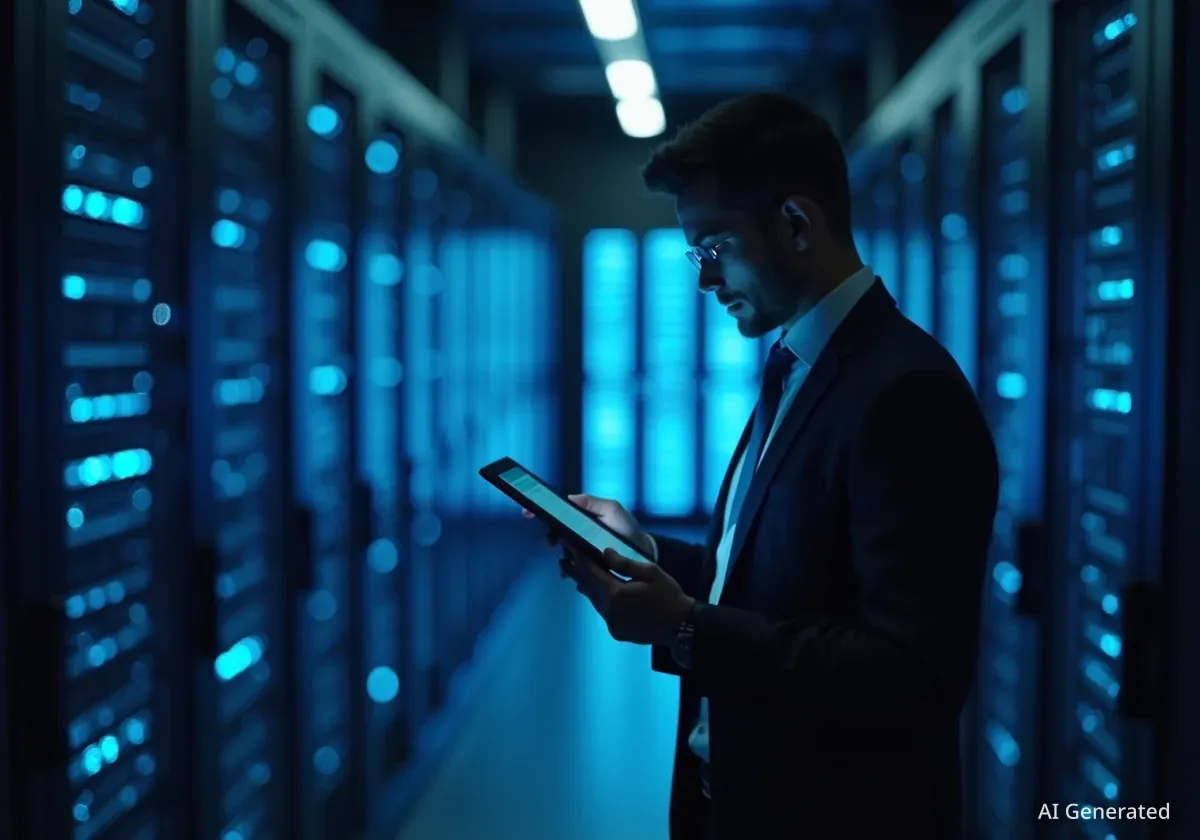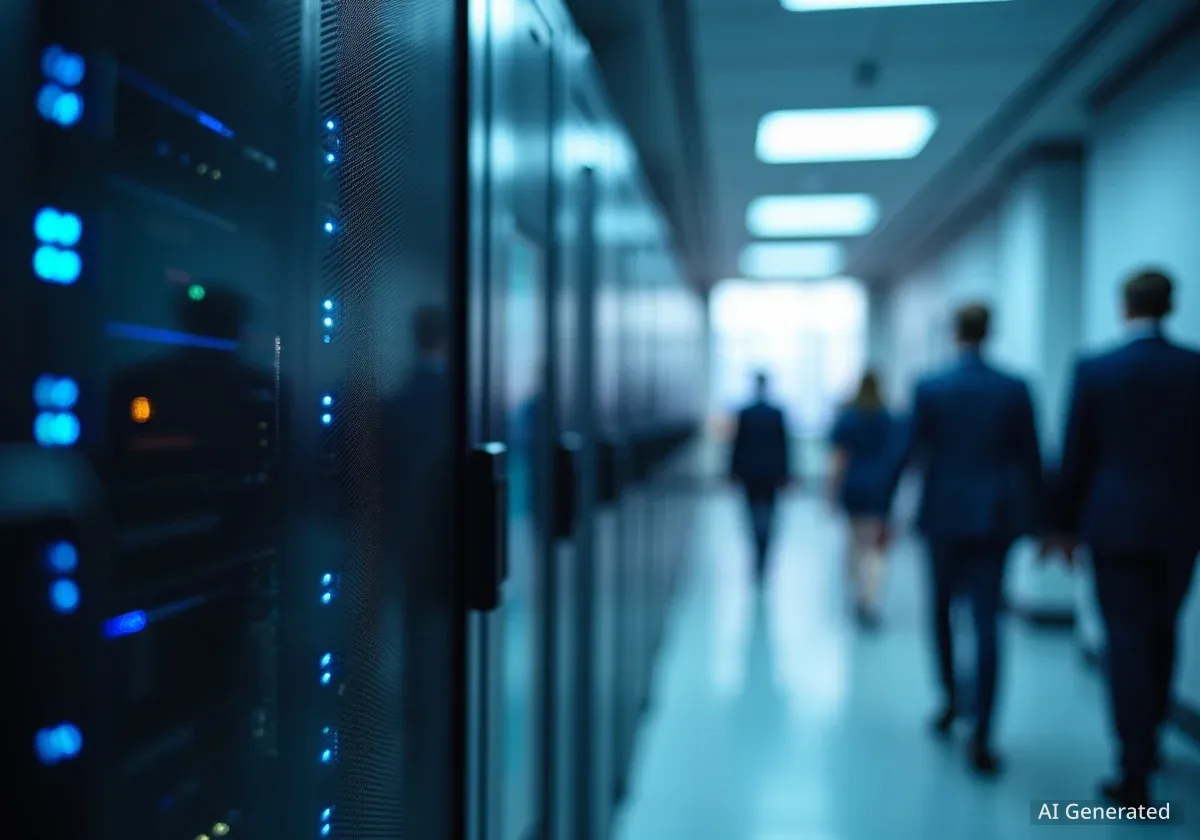As 2025 approaches, businesses across all sectors are moving beyond experimental artificial intelligence projects into full-scale implementation. The focus is shifting from simple automation to sophisticated systems that can reason, create, and collaborate. This next wave of AI is set to redefine operational efficiency, customer engagement, and strategic decision-making.
Key developments in generative AI, multimodal systems, and AI governance are no longer just concepts discussed in boardrooms; they are becoming integral components of business strategy. Companies that successfully integrate these technologies are expected to gain a significant competitive advantage, while those who lag behind risk becoming obsolete.
Key Takeaways
- Generative AI Expansion: Beyond text and images, generative AI will create complex code, synthetic data for training, and sophisticated business simulations.
- Hyper-Automation is the New Standard: AI will drive the next level of automation, connecting disparate business processes and making autonomous decisions to optimize workflows.
- AI Governance Becomes Crucial: With new regulations emerging, establishing strong ethical frameworks and transparent AI practices is a top priority for businesses to build trust and ensure compliance.
- Multimodal AI Integration: Systems that understand and process a combination of text, images, audio, and video will create more intuitive and powerful user experiences.
The Evolution from Automation to Augmentation
The conversation around artificial intelligence in the workplace is fundamentally changing. Initially, the primary goal was automation—using machines to perform repetitive, manual tasks more efficiently than humans. While this remains a core benefit, the focus for 2025 is shifting towards AI-driven augmentation.
Augmentation involves AI systems working alongside human employees, enhancing their capabilities rather than replacing them. This collaborative approach allows employees to focus on high-value tasks that require creativity, critical thinking, and emotional intelligence, while AI handles data analysis, pattern recognition, and routine processes.
Generative AI Moves Beyond Content Creation
Generative AI captured global attention with its ability to create text and images. Looking ahead, its applications are becoming far more sophisticated and integrated into core business functions. By 2025, companies will increasingly use generative AI for tasks like writing and debugging software code, designing complex engineering components, and creating synthetic data to train other machine learning models.
"We are seeing a major shift from using generative AI as a novelty to embedding it as a core productivity tool," notes Dr. Alistair Finch, a technology strategist. "It's becoming a digital assistant for developers, marketers, and financial analysts, dramatically speeding up innovation cycles."
Did You Know?
Market forecasts suggest that the global generative AI market could exceed $1.3 trillion over the next decade, indicating its profound impact on the global economy.
Hyper-Automation: The Connected Enterprise
Hyper-automation represents the next frontier of business process optimization. It involves using a combination of AI, machine learning, and robotic process automation (RPA) to automate as many business and IT processes as possible. Unlike traditional automation that targets individual tasks, hyper-automation aims to connect and streamline entire workflows across an organization.
For example, in a supply chain, a hyper-automation system could monitor inventory levels, predict demand using market data, automatically place orders with suppliers, and even reroute shipments in real-time to avoid delays—all with minimal human intervention.
The Rise of the AI-Powered Workforce
This trend will lead to the creation of a digital workforce that operates 24/7. These AI agents can manage complex systems, respond to customer queries, and perform data analysis, freeing up human teams to focus on strategy and innovation. Key areas where hyper-automation will have a significant impact include:
- Finance: Automating invoice processing, fraud detection, and financial reporting.
- Human Resources: Streamlining recruitment, onboarding, and payroll management.
- Customer Service: Deploying intelligent chatbots and virtual assistants that can resolve complex issues.
What is Multimodal AI?
Multimodal AI refers to systems that can process and understand information from multiple data types simultaneously. For instance, a multimodal system can watch a video, listen to the audio, and read the on-screen text to gain a complete understanding of the content. This is a significant step towards creating AI that interacts with the world in a more human-like way.
Navigating the Complexities of AI Governance and Ethics
As AI becomes more powerful and autonomous, the need for robust governance and ethical guidelines has become paramount. Businesses are now under increasing pressure from regulators and consumers to ensure their AI systems are fair, transparent, and accountable. The upcoming EU AI Act is just one example of a global trend towards stricter regulation.
In 2025, successful AI adoption will depend heavily on a company's ability to build trust. This involves creating clear policies on data usage, ensuring algorithms are free from bias, and providing mechanisms for users to challenge AI-driven decisions.
Building a Framework for Responsible AI
Companies are establishing dedicated AI ethics boards and hiring Chief AI Officers to oversee these efforts. The primary goals of these initiatives are to:
- Ensure Transparency: Making it clear how AI models arrive at their conclusions.
- Mitigate Bias: Actively testing and refining algorithms to prevent discriminatory outcomes.
- Protect Data Privacy: Implementing strong security measures to safeguard the data used to train and operate AI systems.
- Establish Accountability: Defining clear lines of responsibility for the actions of autonomous systems.
"Trust is the new currency in the age of AI," explains legal technology expert Sarah Chen. "Companies that are transparent about their AI practices and demonstrate a commitment to ethical principles will be the ones that win over customers and regulators alike."
Emerging Technologies on the Horizon
While generative AI and hyper-automation dominate current discussions, several other emerging trends are poised to make a significant impact by 2025 and beyond. These include advancements in AI hardware and the development of more sustainable AI models.
Specialized AI Hardware
The demand for more powerful and efficient AI processing is driving innovation in hardware. Companies are moving beyond general-purpose GPUs to develop specialized chips, known as AI accelerators or NPUs (Neural Processing Units), designed specifically for machine learning tasks. These chips promise to make AI applications faster, more energy-efficient, and accessible on a wider range of devices, from smartphones to edge computing sensors.
This hardware evolution is critical for enabling more complex AI models to run locally on devices, reducing reliance on the cloud and improving data privacy and response times. The integration of AI-specific hardware will be a key enabler for the next generation of smart technology in homes, vehicles, and industries.



